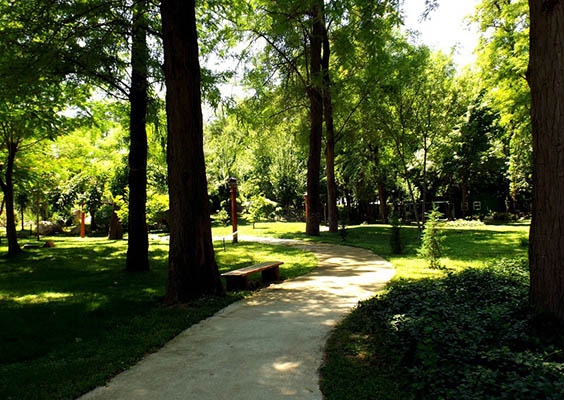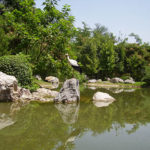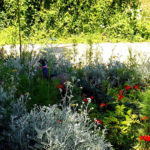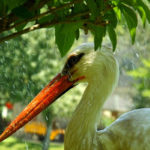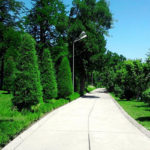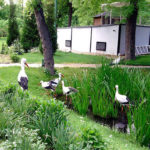Japanese garden pleasantly surprises with its beauty. This is an unusual park. This is a special place. To experience the beauty of this place, you need to feel for a while the national spirit of the Japanese, their depth of national perception of the world, their identity; to know the philosophy of this people, their thinking and values.
Sekithei – in translation is a philosophical garden of stones. He, as if abstractly, reflects all the beauty of nature: life and death, light and darkness, love and hatred, the ocean and the earth, good and evil. All this is contained in the “Yan” and “yang”. “Yin” – light, “Yan” – dark. They make up the Tao-Path of the Universe. 15 stones of the Sekithea symbolize the full moon. Everyone who sees these stones is enchanted by looking at them. People begin to see not only stones, but also a lake or clouds, the sea or waves. All this excites imagination and fantasy. Everyone has his own picture of the world.
Water and stones are the main elements in the Japanese garden. On the shore of the old lake in the spring blossoms, of extraordinary beauty, cherry blossoms. Sakura is the national sacred tree of the Japanese.
The park consists of two gardens. They are divided by the wall of Tsuiigibei, made of wood. One part of the park is called Chisenkaya (a garden with a stream, a pond and glades), the other is Karesansui (a garden with trees and stones).
The gate to the garden of Chisenkaia is decorated modestly. This was conceived by the architects with the goal that people feel at ease. Cozy and simple. To the left of the gate is a stone lantern “Kasugadaro”, which in its appearance resembles a small Buddhist pagoda. He lights up the park and at the same time symbolizes the steps to comprehend the truth. On the right, the gate is decorated with thorium, which is traditional in Japan. Its light is considered a symbol of the reflection of the sun, which crowns our world with nature.
Around the stones grows the grass “dragon beard.” Next behind the stones is the traditional Japanese national partition called “sezdi”. The partition is sliding. It symbolizes respect for ancestors. This issue is taken very seriously in Japan.
The beauty of nature in the park is emphasized very subtly, with the help of landscape art, an ideal harmonious landscape. Every detail here bears in itself a moral principle, a philosophical stamp.
Flowering lawns “Shibaniva” are decorated with an unusual design. This design is called the Japanese Ichimatsu-Moyou, which means “stones in the grass”. This design is made in the chess style, which gives a feeling of trepidation and the enormous strength of the fragile life in every blade of grass, in every flower that make its way to the sun through a mass of stones.
In the heart of the garden there is a tea pavilion. He is called Buden. The well-known Japanese rite (ceremony) “ta-no-yu” is designed to the smallest detail. This mystery is full of beauty, which is hidden from us in our daily life. Especially for ritual bathing in the garden was built a water source – Chezubachi.
A stone lantern in Japanese style resembles a belfry. Rock stones, a bamboo drain – resemble in their outlines a samurai coin – Tsukubai.
The philosophy of the Japanese is to enjoy the Sun, every day, enjoy life, every moment, every sigh, admire the grass and flowers, the fresh air and the singing of birds. The wisdom of the people of Japan is simple. This wisdom also penetrated the Japanese garden.
In the tea house you can free yourself from vanity and reunite with nature. Melodic bronze bell, according to legend, frightens off evil spirits. In the rite of the tea ceremony, people become face to face with nature.
The central hill of the garden is called Tsukiyama. It embodies a great mountain, and the stones on its slopes, in its appearance resemble rocks. Two waterfalls descend from the mountain: one “Yang” – male; another – “Yin” – female. The stone island abstractly reflects the cliffs in the ocean and creates an extraordinary state of lightness and peace.
The Japanese garden in Uzbekistan is amazing. He is never the same – he is always different. In early spring and late autumn, early in the morning and late in the evening, on a warm summer day or on a snowy winter day – he is always amazingly beautiful, and always teaches us not to forget the jewels of every minute, every moment.








